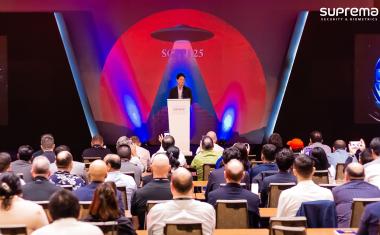Security Solution for wind farm
For asafe operation of the wind farm, the business unit Security Solutions from the Siemens Building Technologies Division will deliver life-critical telecoms, CCTV including a vir...


For a safe operation of the wind farm, the business unit Security Solutions from the Siemens Building Technologies Division will deliver life-critical telecoms, CCTV including a virtual video network and integrated alarm monitoring across a fully integrated IP based monitoring network which includes Voice-Over IP to Greater Gabbard Offshore Wind Farm. The wind farm is under construction on sandbanks approximately 25 km off the coast of Suffolk in the UK and is due for completion in 2012. It has a capacity of 500 megawatts (MW) making it the world's largest offshore wind farm once it becomes operational and Siemens Energy is supplying the 140 3.6 MW wind turbines which connect the wind farm to the National Grid. Greater Gabbard will play a vital part in supplying green electricity to meet the EU target to obtain 20 per cent of energy from renewable sources by 2020.
To enable viewing of the video data from the UK and Europe, Siemens is also integrating the video alarms and monitoring into a Siemens SCADA platform, and the client's IP network. The primary purpose of the surveillance of the offshore wind farm is to evaluate conditions on the remote site, safeguard personnel and monitor the operation offshore. The video information is also used for logistic purposes, planning and for potential incident evaluation. Both the network and the equipment chosen had to be robust and resilient to meet the challenge of this hostile marine environment. This project required a delivery methodology to accommodate the demands of both land and sea and to meet the key critical health and safety challenges set by the two different environments for delivery and maintenance.
In particular, one of the most important design considerations for the Security Solutions team was the remote locations of the turbines. The 140 turbines are mounted on steel monopolies and transition pieces, in water depths between 24 and 34 meters. The most important aspect of the solution was that the system had high-availability with reliable proven components. As additional back up, Siemens has built in remote diagnostics within the IP Platform to facilitate remote repair.
Siemens has designed the system to meet the clients' needs using experience gained from working on projects for the National Grid and Off-shore. Siemens understand just how crucial the design and testing - Factory Acceptance Testing (FAT) and Site Acceptance Testing (SAT) - elements are prior to shipping for an offshore project of this scale. Siemens is overseeing both the installation and commissioning works. The system has been designed to eliminate catastrophic failures enabling a "return to land" service approach. This involved a plug-and-play design, with the capability to easily remove and swap component parts in the event of a fault. This means that specialists do not need to be shipped out to the turbine, reducing maintenance costs and downtime, with all delicate recording equipment also located landside to enable easier access for maintenance and to ensure resilient storage.
Greater Gabbard is being jointly developed by Scottish Southern Electric (SSE) and RWE npower renewables.
Dave Pickles, managing director of the UK Security Solutions business unit of the Siemens Building Technologies Division explains: "Renewable energy is a growing industry and an exciting new sector for Siemens. On completion, Greater Gabbard will be the largest offshore wind farm in the world and will have provided Siemens the opportunity to share its technology and services in one of the UK's most exciting renewable energy projects. Siemens is a market leader in the design, installation and maintenance of innovative and customized security solutions. Our proven track record and experience in delivering multi-discipline technological solutions for critical national infrastructure, urban surveillance, transport infrastructure and police projects means we are well placed to deliver this type of specialist project."
Business Partner
Siemens Smart InfrastructureTheilerstrasse 1a
6300 Zug
Switzerland
most read

Suprema Paves the Way for Automated AI Security at SGPP 2025 Cancun
Suprema unveils AI-powered security at SGPP 2025 Cancun, redefining access control with cloud & video intelligence
Media Kit 2026 GIT SECURITY International
Advertise with the international number one - with GIT SECURITY International. Media kit 2026 for download.

i-Pro Active Guard 3.0: Intelligent Video Search with Generative AI
With generative AI, i-Pro Active Guard 3.0 enables intuitive and precise video analytics.

Team Europe Wins ICC 2025 for Fourth Year Running
Europe secures 1st place at ICC 2025 in Tokyo, showcasing elite cybersecurity skills and global cooperation.

Wagner at Buildinx 2025: Digitalization and Sustainability in Fire Protection
Wagner presents fire protection solutions for logistics properties at Buildinx 2025 at booth 5.B80









